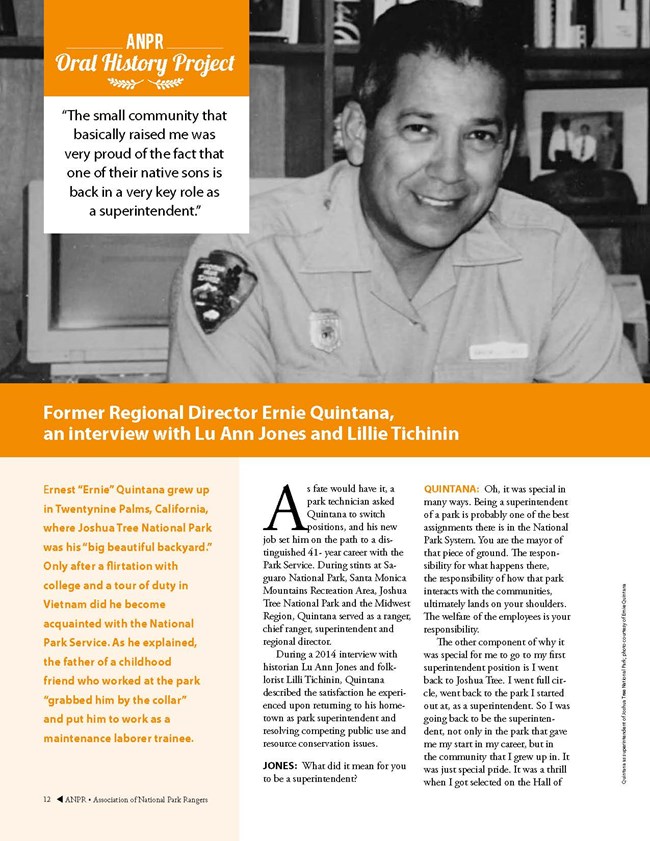Last updated: October 25, 2023
Article
Case Study: Using Oral History Interviews: One Project, Many Uses

ANPR
Oral history projects may require substantial investments in time, money, and labor, but well-done oral history interviews can be used in a variety of ways. Remember the collaboration between the Park History Program and the Association of National Park Rangers (ANPR) described in the Designing an Oral History Project section? It’s a good example of how one project can reach audiences in multiple ways and through several formats and media.
The ANPR oral history project recorded life history interviews with 70 NPS personnel who had served as rangers in a variety of parks between the 1960s and the early 21st century, crucial years of change in the agency. They participated in changes related to search and rescue techniques and equipment; in management of natural and cultural resources; in law enforcement philosophy and practice; in career ladders and opportunities for advancement; and workforce demographics. The project allowed us to capture the perspectives of NPS personnel who had spent their careers on the front lines.
The interviews have been shared in many ways:
Building the archives
The oral history recordings, transcripts, and supplementary materials joined the Oral History Collection in the NPS History Collection at Harpers Ferry Center. They are preserved and available for researchers. Find the ANPR oral history interviews in NP Gallery. An NPS Oral History Collection find aid is also available.
Edited narratives
While editing portions of an oral history transcript into a narrative is rarely as straightforward as one might imagine, it is an effective way to share key portions of an interview. A simple rule of thumb is to edit the transcript to enhance meaning rather than to change meaning. Many of the ANPR narrators were good storytellers and portions of their transcripts could be shaped into compelling stories with light editing. Others required more shaping.
The edited narratives showcased interview excerpts that illustrated a lesson learned, with the hope that the narratives might be used in trainings as examples of challenges faced and addressed. Topics explored ranged from raising a family in national parks to building a career, tackling thorny resource management issues, and learning to deal with death as a rescue ranger. The ANPR’s quarterly magazine, Ranger, offered the perfect publishing venue. The short articles were a way to share the research quickly, demonstrating its usefulness and maintaining interest in the project. Examples of edited narratives can be found here. Ranger devoted an entire issue to the theme, Oral History and the Parks.
Podcasts
- Podcasts, Step 1: In the 2010s the Park History Program joined oral history programs around the country that were foregrounding the aurality of oral history through podcasts. The program hired interns who could complete basic audio editing and production using the ANPR oral histories. Initially, we based our scripts on the short narratives edited for Ranger, and we learned by doing. We began to write for the listening ear, not for the printed page. We added a musical introduction and exit. Slowly, the productions started to sound more polished. We posted them on SoundCloud in 2016, the NPS Centennial year.
- Podcasts, Step 2: As podcasts became more popular and sophisticated, the Park History Program secured a $10,000 grant to hire professional audio producers who brought a fresh ear to the oral history interviews. They included some of the ANPR interviews in the podcast series, A Sense of Place: Stories of Stewardship from the National Park Service. The producers wrote scripts, edited excerpts from selected oral history interviews, chose a musical theme, and included musical interludes. Each podcast stood on its own, but the eight podcasts in the series complemented each other as well. The series emphasized the variety of professionals required to make the National Park System work. The producers used interviews from other Park History oral history projects to feature writers, cartographers, and interpreters in addition to rangers.
